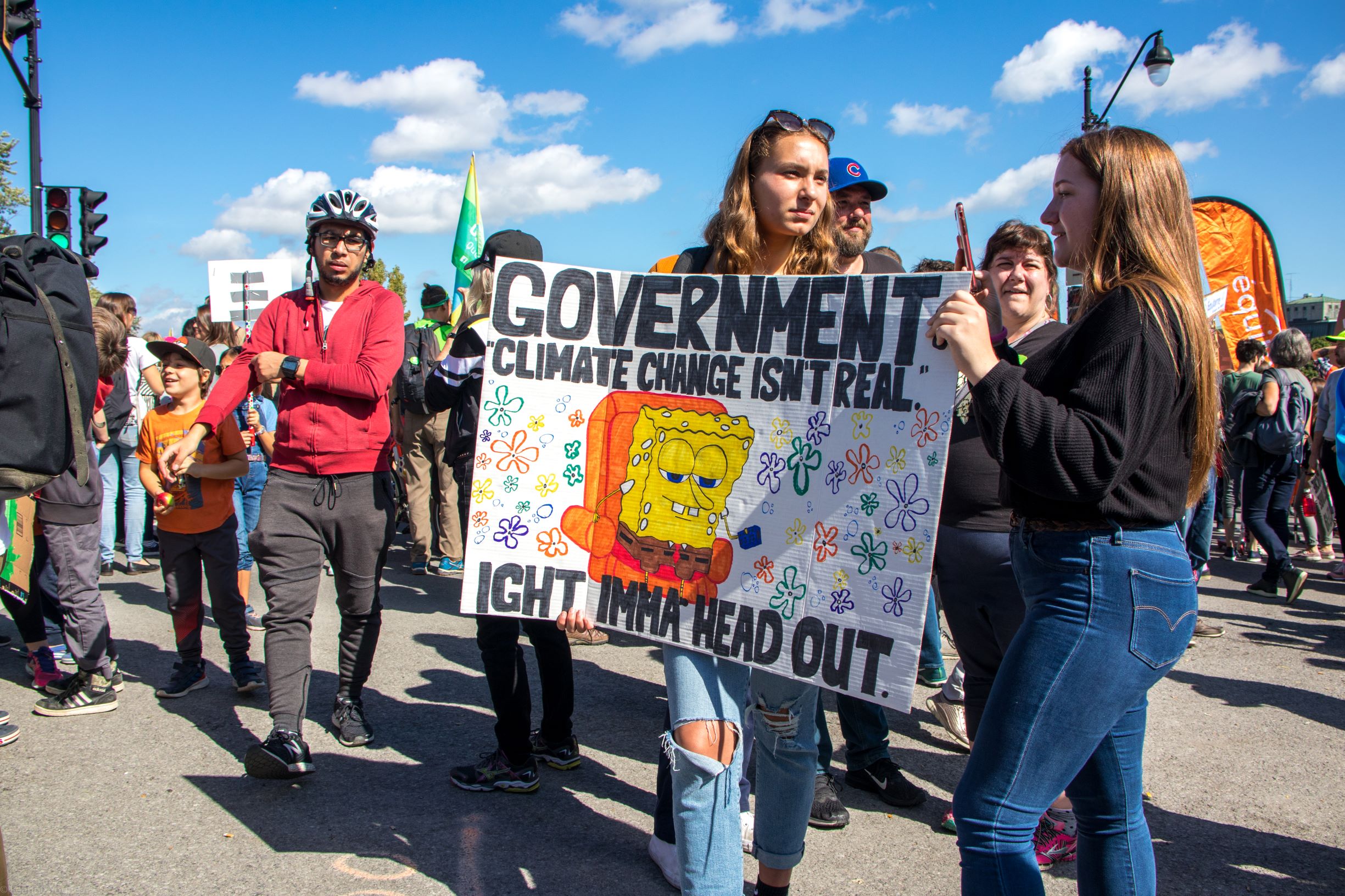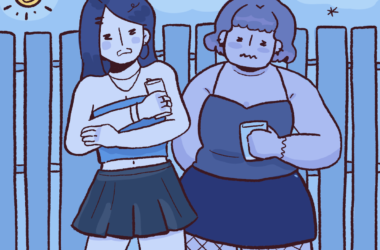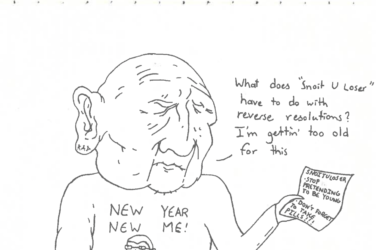The Sept. 27 Global Climate Strike drew half a million protesters to the streets of Montreal in a worldwide series of demonstrations against climate change. Typical environmental slogans like ‘There is no planet B’ or ‘Don’t be a fossil fool’ appeared on many marchers’ signs, but some of the messages that stood out most in the crowd were far less conventional: With references to SpongeBob, Queer Eye, “Hot Girl Summer,” and other popular memes, tweets, and Vines, there was no shortage of creativity on display.
Protests are a medium for free expression, and appreciating the originality of others’ signs creates a unique sense of camaraderie among students. However, some onlookers question whether the use of humour serves to downplay the threat of climate change as an issue. They wonder whether older generations of policymakers, many of whom may not understand niche pop culture references, are likely to respond to these messages. To those who do, however, memes serve as both a fun way of coping with the looming threat of some of today’s biggest headlines, and as powerful new tools for collective demonstration.
Originally a term to describe the way that ideas and behaviours propagate through generations, the modern form of the word meme was derived from a Greek term meaning “that which is imitated.” The meme has since become an integral medium for political dialogue and civic engagement. Thanks to the internet, it has become increasingly easy for memes to gain popularity and go viral overnight. Given that there is no real limit on what can be considered a meme, they are often used to relay political or social commentary through humour.
Montreal’s climate march was just one instance of the unique intersection of protesting and meme culture. Pop culture references have recently fuelled a variety of movements around the globe, including Hong Kong’s anti-government protests this summer as well as national school walkouts in the US to demand gun reform. Unlike other forms of communicative protest, memes cannot easily be shut down, so they are a powerful mobilizing tool. With the internet as an efficient medium for disseminating snapshots from around the world, protesters draw inspiration from other signs and build on the movement with their own contributions.
Regardless of the political statements they make, memes are an innovative form of expression. They help to break down and articulate complex issues, spread ideas, and make sense of emotions. While some joke signs may be criticized for oversimplifying complex political matters, others can be comedic while still remaining poignant.
While memes may not directly bring about any tangible policy action or reform, they relay important issues and spread quickly enough to bring them to the forefront of discussion. They reflect what is happening in society at a given point and help justify feelings of rage and fear while allowing us all to feel a little less alone. Further, memes are simple to create and reproduce, and they evolve over time based on their reception.
As students marched through the streets of Montreal and around the globe with posters inspired by memes, slogans, songs, and artwork, they proved that there is no one formula for demonstrating an issue as widespread as climate change. Our generation has the ability to band in solidarity over familiar images and slogans and seamlessly incorporate politics into our everyday self-expression. Memes make us laugh while simultaneously uniting us around common feelings about real world issues. Sometimes a laugh is necessary in the midst of all the political chaos, and a meme offers just that.









